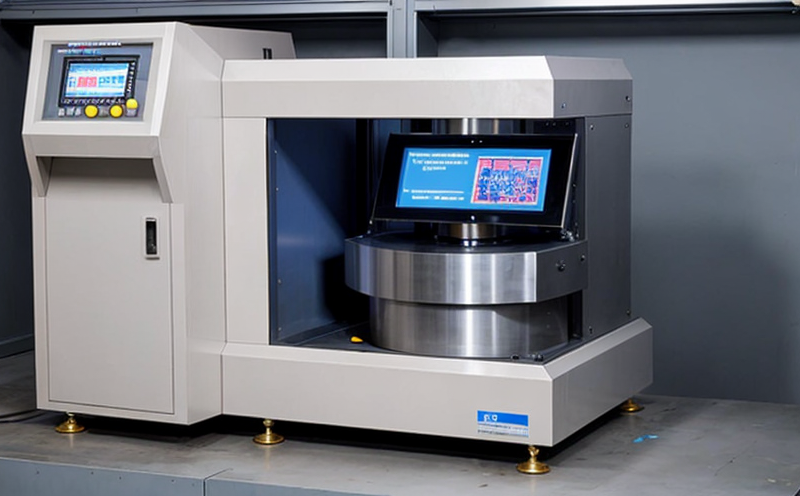ISO 8785 Surface Imperfections Dimensional Testing
The ISO 8785 standard is widely recognized as a cornerstone in ensuring dimensional accuracy and quality control within additive manufacturing (AM) and 3D printing processes. This test evaluates the surface imperfections of parts produced using AM technologies, focusing on dimensions that can impact performance and reliability.
Dimensional accuracy is critical for AM components used in sectors such as aerospace, automotive, healthcare, and electronics, where precision is paramount. In industries like aerospace, for instance, even small deviations from specified dimensions can lead to catastrophic failures. Similarly, in the medical field, precise alignment of 3D-printed implants ensures patient safety and successful surgical outcomes.
The test involves measuring key dimensional parameters such as height, width, length, and angles using specialized metrology equipment like coordinate measurement machines (CMMs) and optical scanners. Specimens are prepared by selecting representative parts that have been printed under typical production conditions to ensure the results are reflective of real-world performance.
The testing process adheres strictly to ISO 8785 standards, which provide detailed guidance on how to measure surface imperfections. This includes defining tolerances and acceptable ranges for deviations from nominal dimensions. The test also evaluates the impact of these imperfections on functional integrity, ensuring that parts meet both dimensional accuracy requirements and performance specifications.
Once testing is complete, detailed reports are generated summarizing all measurements and comparing them against specified tolerance limits. These reports serve as crucial documentation for quality assurance processes, helping manufacturers identify areas where improvements can be made in their AM processes.
| Industry | Application |
|---|---|
| Aerospace | Ensuring precise part alignment and fit within complex assemblies |
| Automotive | Verifying critical dimensions of components that interact with other parts |
| Healthcare | Guaranteeing accuracy in implant manufacturing to prevent surgical complications |
| Electronics | Achieving precise tolerances for intricate circuit boards and connectors |
- In aerospace, dimensional accuracy is crucial for ensuring parts fit into complex assemblies without causing stress or failure.
- In automotive applications, precision in critical dimensions can prevent issues such as misalignment leading to premature wear or failure.
- For healthcare implants, accurate measurements ensure patient safety and successful surgical outcomes.
- The test ensures that parts meet dimensional accuracy requirements specified by industry standards like ISO 8785.
- It provides detailed reports for quality assurance and process improvement in AM manufacturing processes.
The expertise of our team, combined with state-of-the-art metrology equipment, guarantees accurate and reliable testing results that are essential for maintaining high-quality standards in additive manufacturing and 3D printing. This service is indispensable for ensuring that parts produced through these advanced technologies meet the stringent requirements set by industry standards.
Scope and Methodology
The scope of ISO 8785 Surface Imperfections Dimensional Testing encompasses a comprehensive evaluation of surface imperfections in additive manufactured parts. This includes assessing deviations from nominal dimensions, measuring critical features such as height, width, length, and angles, and ensuring compliance with specified tolerance limits.
Our methodology adheres strictly to the guidelines provided by ISO 8785, which outline detailed procedures for conducting dimensional accuracy tests. We use advanced metrology equipment like coordinate measurement machines (CMMs) and optical scanners to capture precise measurements of parts. The testing process involves selecting representative specimens that have been printed under typical production conditions.
The test parameters are carefully defined based on the specific requirements of the part being evaluated, ensuring that all critical dimensions are measured accurately. Specimens are prepared by removing any unnecessary material or coatings to ensure clean and unobstructed measurements. Once the specimens are ready, they undergo rigorous testing using precision instruments calibrated according to ISO standards.
The results of these tests are meticulously recorded and compared against specified tolerance limits. Any deviations from nominal dimensions are quantified and reported in detail. This comprehensive approach ensures that parts produced through AM technologies meet the highest quality standards and can be relied upon for critical applications.
Industry Applications
- Aerospace: Ensuring precise part alignment and fit within complex assemblies.
- Automotive: Verifying critical dimensions of components that interact with other parts.
- Healthcare: Guaranteeing accuracy in implant manufacturing to prevent surgical complications.
- Electronics: Achieving precise tolerances for intricate circuit boards and connectors.
| Application | Benefit |
|---|---|
| Aerospace | Prevents catastrophic failures due to misalignment or incorrect part fit. |
| Automotive | Reduces the risk of premature wear and failure in critical components. |
| Healthcare | Promotes patient safety by ensuring accurate implant dimensions for successful surgical outcomes. |
| Electronics | Achieves precise tolerances that are essential for the performance of complex electronic devices. |
The applications listed above highlight the importance of dimensional accuracy testing in ensuring product reliability and safety across various sectors. By adhering to strict testing protocols, we can provide clients with confidence that their additive manufactured parts meet the highest quality standards.
Why Choose This Test
- Precision measurements ensure compliance with ISO 8785 standards.
- Detailed reports facilitate process improvements and quality assurance.
- State-of-the-art metrology equipment guarantees accurate results.
- Comprehensive testing covers all critical dimensions of parts.
- The test ensures that additive manufactured parts meet the stringent requirements set by industry standards.
- Detailed reports provide valuable insights into production processes and potential areas for improvement.
- Our equipment is calibrated according to international metrology standards, ensuring reliable measurement results.
- By covering all critical dimensions of parts, we ensure that no aspect of dimensional accuracy goes unchecked.
The ISO 8785 Surface Imperfections Dimensional Testing service offers numerous advantages for quality managers, compliance officers, R&D engineers, and procurement professionals. By choosing this test, organizations can demonstrate their commitment to maintaining high-quality standards in additive manufacturing and 3D printing processes.





